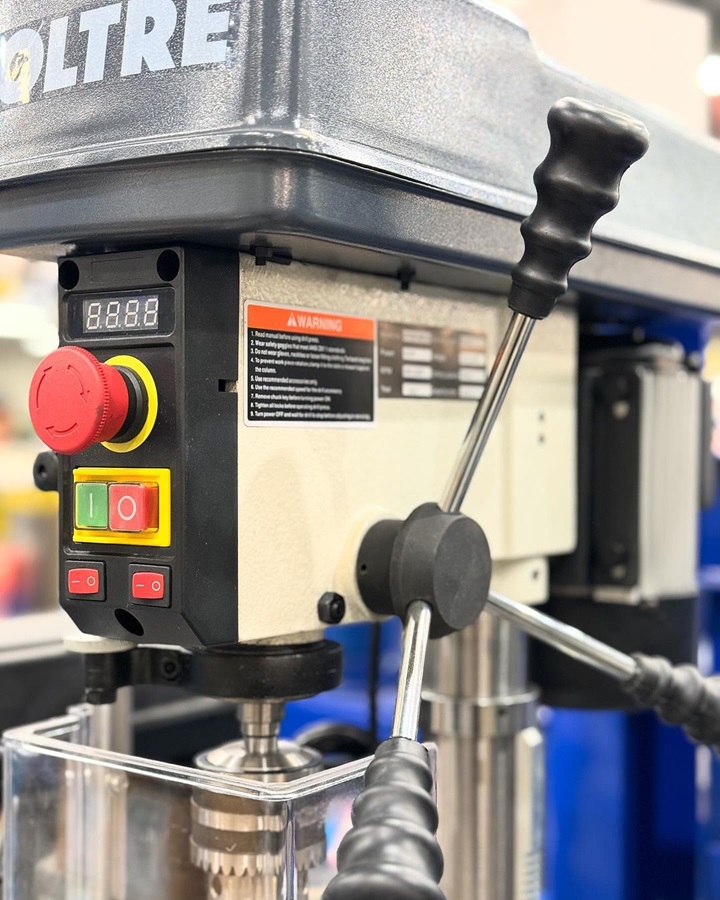Bench Drill Presses: A Comprehensive Guide to Choosing, Using, and Maintaining
In the world of woodworking, metalworking, and general DIY projects, a bench drill press is an invaluable tool. This powerful machine allows for precision drilling with minimal effort, making it a staple in workshops around the globe. Whether you’re a seasoned craftsman or a hobbyist looking to expand your tool collection, understanding the ins and outs of bench drill presses can help you make the most of this versatile equipment.
What is a Bench Drill Press?

A bench drill press is a stationary drilling machine mounted on a workbench or stand. Unlike handheld drills, a bench drill press provides more control, accuracy, and power, making it ideal for tasks that require precision. It consists of several key components, including the base, column, table, and drill head, which holds the motor and chuck. The chuck is where the drill bit is secured, allowing for various sizes and types of bits to be used.
Bench drill presses come in various sizes and power ratings, from compact models suitable for light-duty tasks to more robust machines designed for heavy-duty drilling. The choice of a bench drill press depends largely on the nature of your projects, the materials you work with, and the level of precision required.
Key Features to Consider
When selecting a bench drill press, there are several key features to consider to ensure you choose the right tool for your needs:
- Motor Power: The motor’s power determines how efficiently the drill press can cut through different materials. For woodworking or light metalworking, a motor with 1/3 to 1/2 horsepower may suffice. For more demanding tasks, a motor with higher horsepower is recommended.
- Speed Settings: Variable speed settings allow you to adjust the drill’s RPM (revolutions per minute) depending on the material being drilled. Harder materials like metal require slower speeds, while wood can be drilled at higher speeds. Some models offer a wide range of speed settings, while others may have just a few. Consider what you’ll be drilling most often when evaluating this feature.
- Chuck Size: The chuck size determines the maximum diameter of the drill bit that can be used. Common sizes include 1/2 inch and 5/8 inch. A larger chuck size allows for greater versatility in bit selection, which is especially useful if you work with a variety of materials.
- Table Adjustability: The table of a bench drill press can typically be adjusted vertically and tilted to accommodate different drilling angles. Look for a drill press with a sturdy, adjustable table that locks securely in place to maintain accuracy during use.
- Depth Stop: A depth stop is a feature that allows you to set the exact depth to which the drill bit will penetrate. This is particularly useful for repetitive drilling tasks where consistent depth is crucial.
- Build Quality: The overall build quality of the drill press is essential for durability and precision. A machine made of high-quality materials like cast iron or steel will offer better stability and longevity than one made of lighter materials.
Using a Bench Drill Press

Operating a bench drill press is relatively straightforward, but there are a few best practices to keep in mind to ensure safety and accuracy:
- Securing the Workpiece: Always secure your workpiece to the drill press table using clamps or a vise. This prevents the material from spinning or shifting during drilling, which could result in injury or a ruined project.
- Selecting the Right Bit: Choose the appropriate drill bit for the material and task at hand. For instance, use a brad-point bit for wood, a twist bit for metal, and a masonry bit for drilling into concrete or brick.
- Setting the Speed: Adjust the speed of the drill press according to the material you’re working with. Remember that harder materials require slower speeds to prevent overheating and dulling of the bit.
- Positioning the Bit: Lower the drill bit to the workpiece to align it with the desired drilling location before turning on the machine. This ensures that the hole will be drilled exactly where you intend.
- Using the Depth Stop: If you need to drill multiple holes to the same depth, set the depth stop accordingly. This feature is particularly useful for tasks like doweling or creating mortises.
- Maintaining Proper Pressure: Apply steady, even pressure when drilling. Let the drill bit do the work, and avoid forcing the bit into the material, as this can cause overheating and damage to both the bit and the workpiece.
Maintenance Tips for Longevity
Regular maintenance of your bench drill press will ensure it operates efficiently and lasts for years. Here are some essential maintenance tips:
- Keep it Clean: After each use, clean the drill press to remove any dust, debris, or metal shavings. This prevents build-up that can affect the machine’s performance.
- Lubricate Moving Parts: Periodically lubricate the moving parts of the drill press, such as the quill, table adjustments, and depth stop. This reduces friction and wear, ensuring smooth operation.
- Check the Belt: The belt that drives the drill press should be inspected regularly for signs of wear or damage. Replace it if it shows signs of fraying or cracking to prevent it from breaking during use.
- Tighten Bolts and Screws: Vibration during use can cause bolts and screws to loosen over time. Regularly check and tighten them to maintain the drill press’s stability and accuracy.
- Sharpen or Replace Drill Bits: Dull drill bits not only reduce the quality of your work but can also strain the drill press motor. Sharpen or replace bits as needed to ensure clean, precise holes.
- Inspect the Chuck: The chuck should hold the drill bit securely without wobbling. If you notice any play in the chuck, it may need to be tightened or replaced to maintain accuracy.
Conclusion
A bench drill press is a versatile and essential tool for any workshop, offering precision and power for a wide range of drilling tasks. Whether you’re working with wood, metal, or other materials, the right drill press can make your projects easier and more accurate. By understanding the key features to look for, following best practices for use, and maintaining your machine properly, you can ensure that your bench drill press remains a reliable tool in your workshop for years to come.
Investing in a quality bench drill press and taking the time to learn how to use it effectively will pay off in the long run, allowing you to tackle even the most challenging drilling tasks with confidence.












